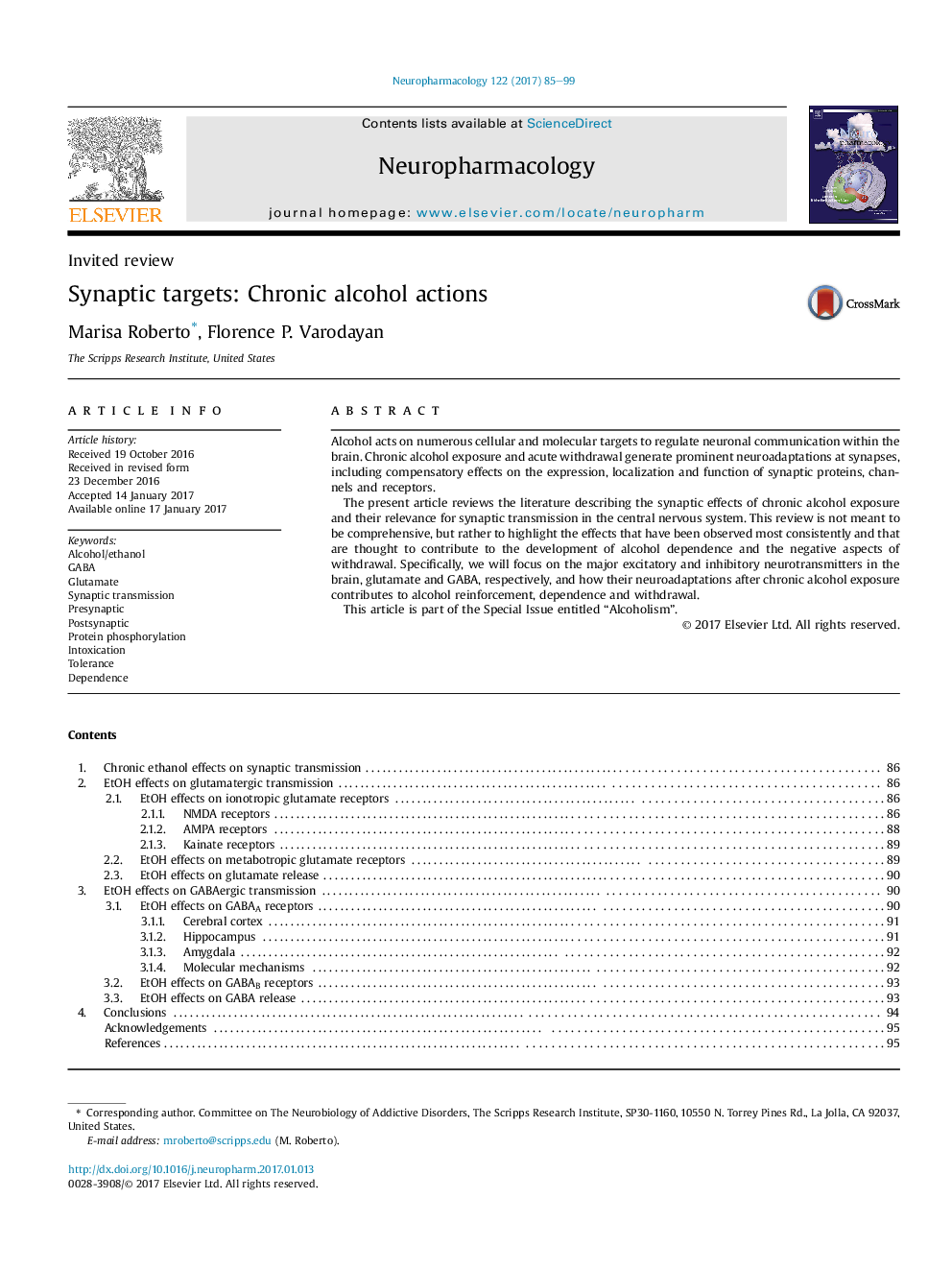| Article ID | Journal | Published Year | Pages | File Type |
|---|---|---|---|---|
| 5548847 | Neuropharmacology | 2017 | 15 Pages |
â¢Chronic alcohol exposure produces neuroadaptation at GABA and glutamate synapses.â¢The main effects are altered GABAAR/NMDAR expression, composition and/or function.â¢It is hypothesized that these adaptations play a role in addictive drinking behavior.
Alcohol acts on numerous cellular and molecular targets to regulate neuronal communication within the brain. Chronic alcohol exposure and acute withdrawal generate prominent neuroadaptations at synapses, including compensatory effects on the expression, localization and function of synaptic proteins, channels and receptors.The present article reviews the literature describing the synaptic effects of chronic alcohol exposure and their relevance for synaptic transmission in the central nervous system. This review is not meant to be comprehensive, but rather to highlight the effects that have been observed most consistently and that are thought to contribute to the development of alcohol dependence and the negative aspects of withdrawal. Specifically, we will focus on the major excitatory and inhibitory neurotransmitters in the brain, glutamate and GABA, respectively, and how their neuroadaptations after chronic alcohol exposure contributes to alcohol reinforcement, dependence and withdrawal.This article is part of the Special Issue entitled “Alcoholism”.
